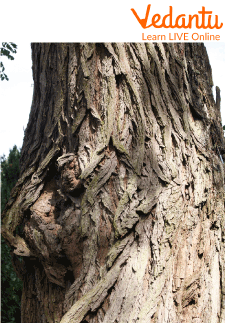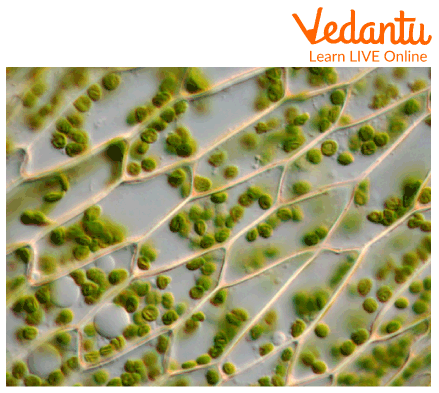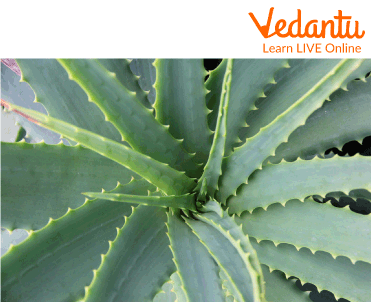




Introduction to Defense Mechanisms of Plants
Plants have their defence system, but they can neither speak nor walk, so how do they protect themselves? The strong layer on the branches, stems and roots of trees is called bark. The bark also has many functions, such as resistance to insects also keeping the plant safe from fire.
Some special tree plants have special protection system, such as the long thorns or many plants that are poisonous.
So this is how trees and plants protect themselves. We should also be aware of all these things because some plants can be fatal. But why do they need protection, and from whom? Let's read this below.

Bark of a Tree
Why Do Plants Need Protection?
Plants defend themselves widely depending on location, growing conditions, and the predators by which the plant may be attacked. In most cases, plant protection is essential to avoid damage and ensure that the plant can reproduce.
Animals commonly eat plants. This is the main reason why plants need protection. Because of this plants develop physical structures that make it difficult for animals to consume the plant – such as thorns.
While larger animals can be stunted by the presence of thorns or large spikes along the length of plant stems and leaves, other plants may require more specialised structures. Plants eaten by irritating insects or insects may require modification of leaf growth structures.
Types of Defences in Plants
There are two types of defences that help plants to protect themselves. These types are:
Constitutive Defense
Induced Defense
Constitutive Defense: In this type of defence, plants have power in themselves only. It is attached to plants and used whenever they are in danger. Most plants use these techniques to protect themselves. For example, when the plants have thorns or chemical poisons thus preventing the animals from eating them.
Induced Defense: In this type of defence, the plant's surroundings help and protect them whenever they are needed. But this is not that helpful. For example, some plants camouflage with their surroundings and thus go unnoticed by their predators.
Chemicals in Plants
Plants can use their chemicals to defend themselves. They produce chemicals that act as poison for others. These chemicals are very poisonous and can also kill anyone. When they get alert and know someone is attacking them, they can release this dangerous chemical at that moment only and can protect themselves. Some examples of chemicals secreted by the plants are: caffeine, nicotine, cardiac glycosides and etc.
Protecting Structures of Plants
Cell Walls and Cuticles are the protecting structures of plants that help them to protect themselves. These functions are:
Like humans, plants also have cell walls that protect themselves such as from bacteria.

Plant Cell Wall Structure
A cuticle is an outer layer which covers the plants and protects them. It is a hard layer so that it can protect them whenever they are in danger.
It covers every outer part of the plants, such as flowers, fruits, leaves, stems etc., that need to be protected from external danger like animals(that want them to harm them).
Interesting Facts About Plant Defences
To keep themselves protected from bacteria, they have rigid cell walls.
They also have many things, like bark and thorns, that can protect them from small insects to large mammals.
Aloe vera and cactus have thorns to protect them from being eaten by anyone.

Thorns in Aloe Vera
Many gardeners use chemicals to protect their plants from small insects.
Some plants produce chemicals to protect themselves.
Some plants are very poisonous. If we touch them or anyhow eat them, they can kill us. The poison can get into our bodies by just touching them. So be careful.
Solved Questions
Multiple Choice Questions (MCQs)
1. What is cuticle in plants?
a. Soft Inner Layer
b. Soft Outer Layer
c. Hard Inner Layer
d. Hard Outer Layer
Ans: Option (d) is correct.
2. Which is a type of plant defence?
a. Missile Defense
b. Constitutive Defense
c. Induced Defense
d. Both b and c
Ans: Option (d) is correct.
3. Which does not help plants to protect themselves?
a. Barks and Thorns.
b. Cell walls and Cuticle.
c. Perfume.
d. Chemicals.
Ans: Option(c) is correct.
Learning By Doing
Write True or False.
1. Plants don't have cell walls.
2. Plants have an outer layer called a cuticle.
3. which defends them.
4. Plants can produce defence chemicals to protect themselves.
5. Rose plants don't have thorns to protect themselves.
Summary
As we know, we have read many things related to plant defences. There are many things that we learn about plants and know how they protect themselves.
Like us, they also need protection when they are in danger. For that, there are many ways in which they can protect themselves. Many parts of plants are attached to them for their protection, such as bark and thorns. That we had already studied in this chapter.
FAQs on How Do Plants Protect Themselves?
1. What are the examples of Constitutive defence?
There are examples of Constitutive defence which are already attached to plants themselves. These examples are the bark, thorns, cell walls, cuticles etc.
Plants are Protecting themselves with the help of their Thorns.
2. What are the examples of induced defence?
Plants produce chemicals for a defence that are poisonous and help them defend themselves.
3. Write one difference between induced and constitutive defence.
Constitutive defence - This is a continuous defence; they are always present in plants and help them at the time of the attack.
Induced defence - This defence is not always available with plants. They present and help them only at the time of the attack.









